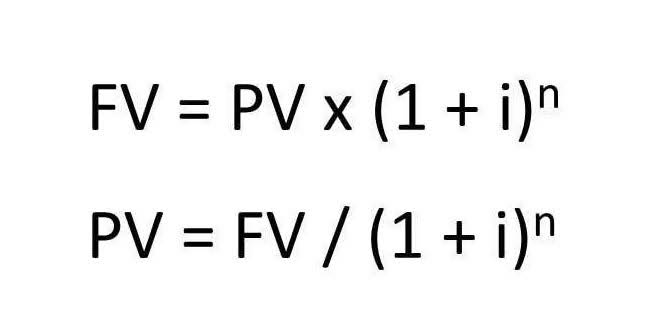
Properly accounting for retainage is crucial for cash flow management and financial planning. It ensures that companies have the necessary funds to cover project costs and obligations. The construction industry is a complex field that requires meticulous accounting techniques to ensure profitability and support expansion.
- Allocating costs is a crucial aaccountingspect of construction-in-progress (CIP) accounting.
- Managing payroll for contractors can be a headache, but QuickBooks offers solutions that make the process more streamlined and less stressful.
- It minimizes manual tasks, leaving you with more time to focus on what really matters—growing your business.
- To navigate the complexities of construction accounting effectively, it’s essential to understand the various components that make up a WIP report.
- Progress billing is one of the most widely used methods in construction, particularly for long-term projects.
Complexities of Large-scale Projects:
The progress of payment will depend on the contract which may be related to the specific result. The concept is similar, we calculate the percentage from the incurred unit and payroll compare it with the total unit expected. It is more accurate than the cost as it may be impacted by other factors such as inflation and price increase. Each option has its advantages and considerations, and choosing the right one depends on the company’s financial situation and growth plans. Unit price billing is used in contracts where the work is divided into quantifiable units (e.g., cubic yards of concrete, square footage of flooring). The contractor and client agree on a price per unit, and billing is based on the number of units completed.
Streamlining Payroll Management with QuickBooks
- Instead, contract revenue should only be recognized to the extent that contract costs are expected to be recoverable.
- It involves assigning expenses incurred during a construction project to the appropriate asset account systematically and accurately.
- Upon project completion, the CIP balance is reclassified to a fixed asset account, formally designating the asset as operational.
- CIP is classified as an asset rather than an expense, representing the company’s investment in ongoing projects.
- For Job A, the impending change order necessitates a careful reassessment of the project budget and timeline.
- Once you’ve selected the right version, the next step is to create your company profile.
- The construction industry relies heavily on robust accounting techniques to ensure profitability and facilitate expansion.
Proper CIP accounting ensures compliance with regulations and creates an audit-ready financial record. WIP reports empower project managers and executives to make informed decisions about resource allocation, project prioritization, and strategic planning. Accurate financial data supports better decision-making at both the project and organizational levels. While WIP accounting lays the foundation for financial transparency in construction, WIP reports offer a dynamic, real-time view of a project’s financial pulse. Kelsie is a Senior Strategic Product Consultant for general contractors at Procore; working closely with civil and infrastructure clients.
A Beginner’s Guide to the Percentage of Completion Method for Contractors

Effective cash flow management ensures that companies can meet their financial obligations while investing in opportunities for expansion. In addition to cost estimation and cash flow management, construction companies benefit from regular financial reporting and analysis. These practices provide insights into financial health and operational efficiency, allowing firms to adjust strategies as needed. By leveraging comprehensive accounting techniques, construction companies can achieve sustained growth and long-term success. Integrating project management tools into the accounting systems of construction companies can significantly enhance financial oversight and project what is cip in accounting efficiency.
Construction accounting is distinct from other types of accounting due to the project-based nature of the industry. Each construction project is treated as a unique entity, requiring separate tracking of costs, revenues, and profitability. This necessitates specialized accounting techniques to manage the financial complexities inherent in multiple, concurrent projects. One unique aspect is the use of percentage-of-completion and completed-contract methods for revenue recognition. These methods help in accurately matching revenue with the costs incurred during different stages of a project, ensuring a more precise reflection of a company’s financial health. The choice between these methods depends on the project’s duration and the contractor’s ability to make reliable estimates.

This balance helps maintain a steady cash flow, preventing potential disruptions in project execution. Additionally, construction firms can utilize financial tools such as lines of credit or invoice factoring to bridge temporary cash flow gaps. These instruments provide immediate access to funds, ensuring that projects continue without interruption. Proper cash flow management not only supports day-to-day operations but also enables strategic investments for future growth and expansion in the competitive construction market.
Tracking Expenses Effectively with QuickBooks
Finally, there may be other costs that can be specifically charged to the customer under the terms of the contract – these should also be taken into account. By taking all of these factors into consideration, it is possible to develop a clear picture of the true cost of a contract and ensure that it represents good value for money. When it comes to construction contracts, it’s important to understand that each asset is treated as a separate contract if specific conditions are fulfilled. This means that if a construction contract relates to two or more assets, each asset will be treated as a separate contract. Keeping completed projects in CIP accounts can misrepresent your financial position. Tracking costs during construction helps businesses stay within budget and adjust as needed.

Large-Scale Infrastructure Projects
Once a company completes construction and receives the certificate of occupancy for its warehouse, plant or office, the company officially places the asset in service. At that time the company removes the construction in progress account from the balance sheet, replacing it with a regular long-term asset account. Typically, companies that utilize bookkeeping and payroll services construction financing to build a property obtain permanent financing that replaces the construction loan. The construction in progress balance reflects the sum of all the invoices received from all the parties involved in constructing the building.